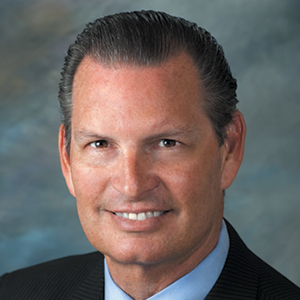An increasing number of commercial mortgage brokers and borrowers are looking to nonbank lenders to fund their transactions. A survey conducted by Money360 earlier this year at the 2018 Mortgage Bankers Association (MBA) convention in San Diego found that 78 percent of respondents plan to increase the amount of financing they do through alternative (or nonbank) lenders over the next year.
This growth in the use of nonbank lenders is supported by two larger trends — the overall health of the commercial real estate market and the advantages of using nonbank lenders relative to traditional lenders like big banks.
Some 52 percent of the 148 mortgage professionals responding to the survey at the MBA event expect multifamily properties to be the hottest commercial asset class in 2018, followed by industrial (30 percent), hospitality (8 percent), office (6 percent) and retail (2 percent). The industrial-space sector, in particular, should receive a boost from recent federal tax reforms, with a significant increase in supply expected over the next 18 to 24 months.
A rising tide
Data from the Money360 survey reveals that a number of economic drivers are fueling growth in the commercial real estate market, with strong economic growth (38 percent), rising interest rates (27 percent) and continued suburban development (20 percent) highlighted as the top three factors. The effects of these factors will likely be the most dramatic in Tier II cities such as Charlotte, North Carolina; Phoenix; Salt Lake City; and Portland, Oregon — all of which still have ample room for growth.
“ The most successful alternative lenders combine technology, particularly for an initial screen, with a dedicated team that has years of experience. ”
Nonbank lenders will continue to benefit from this surge in commercial activity as mortgage brokers look for additional sources of financing. In fact, on average, 42 percent of the brokers polled said they approach more than six lenders when looking for commercial financing, which can encompass a broad range of business models and financial institutions. This suggests that the vast majority of borrowers and brokers in the commercial real estate space are now looking at nonbank lenders as potential sources of financing.
More than 40 percent of the mortgage brokers surveyed at the MBA event said they use nonbank lenders to finance 25 percent to 50 percent of their commercial deals, and 29 percent said they opted for nonbank lenders for 50 percent to 75 percent of their deals. These numbers are a testament to how much the alternative-lending industry has grown and matured since the financial crisis.
It’s easy to see why alternative lenders today are so popular. Of the survey respondents who said they will seek more financing from nonbank lenders in 2018, nearly half (49 percent) said it was because of the financing flexibility offered by nonbank lenders. Transparency (18 percent) and speed (18 percent) also were cited as primary reasons by survey respondents for choosing nonbank lenders.
Regulations imposed on banks to prevent them from becoming over-leveraged, such as the Dodd-Frank Act and the Basel III capital requirements, have caused these large financial institutions to focus on only the most lucrative commercial real estate projects. Increased reserve requirements made it less profitable for many banks to pursue small and midsized loans or borrowers.
As a result, many borrowers were squeezed out of the market and needed alternative sources of capital. With traditional lenders largely constrained within the commercial real estate space, a multitude of alternative lenders have popped up in the market.
The tech edge
Just as regulations were tightening, technology was improving. Enhanced internet capabilities and access allowed alternative lenders to fill the gap left by the banks. These alternative-lending companies were willing to take on smaller loans that traditional lenders ignored and were able to greatly accelerate the lending process for borrowers through the use of tech-enabled platforms.
Instead of waiting weeks or even months for a bank or other lender to decide on a loan application, borrowers using tech-enabled alternative lenders can often apply in minutes and receive a loan decision in as little as 24 to 48 hours. On top of improved speed, technology-based platforms generally include online deal trackers or managers. These tools allow mortgage brokers and borrowers to keep track in real time of the status of a loan, thereby delivering an improved customer experience.
While technology plays a big role in the success of online lenders, they are not solely reliant on it. Alternative lenders understand that each loan decision is unique and requires human expertise. An algorithm will never be able to account for all the nuances that go into underwriting a commercial property.
For this reason, the most successful alternative lenders combine technology, particularly for an initial screen, with a dedicated team that has years of experience underwriting and structuring commercial real estate loans. This dual approach ensures that each borrower receives a loan that fits their particular needs, increasing the chances that it is repaid and the lender recovers its capital.
Direct-lender advantage
As more borrowers and brokers enter the commercial real estate market, it is important to select the right lender. First, all mortgage brokers need to understand the difference between a direct lender and a crowdfunding platform. In the simplest terms, a direct lender makes loans directly from its balance sheet while a crowdfunding platform aggregates capital from a combination of institutional and retail investors before it can fund a loan.
Nonbank direct lenders are becoming an increasingly attractive option for mortgage brokers and borrowers who want to eliminate the middle man. Instead of potentially waiting days or weeks for funding from outside investors, direct lenders provide an added level of certainty that a transaction will be completed — a vital characteristic in an industry where timeliness is critical.
On top of their expertise within the alternative-lending space, direct lenders also offer other advantages over traditional banks. Direct lenders, for instance, typically enjoy more flexibility to provide brokers with an opportunity to customize each deal to their clients’ specifications. This advantage is particularly important given the growing demand for projects involving the rehabilitation or revitalization of older buildings. Those tend to require the kind of short-term loans or tailored financing that many direct lenders specialize in arranging.
• • •
The speed and flexibility of nonbank lenders have enabled them to become a go-to source for capital for borrowers and mortgage brokers specializing in the commercial real estate field. As the industry continues to grow, it is important that commercial mortgage brokers and borrowers understand the different types of alternative lenders that are out there as well as the advantages of choosing a nonbank lender.
Author
-

Gary Bechtel serves as CEO of Michigan-based Red Oak Capital Holdings LLC, a group of capital entities that lends and invests on commercial real estate by raising funds through retail and institutional channels. He leads the company’s investment management leadership teams with direct oversight of all portfolios. Prior to joining Red Oak in 2020, Bechtel served as president of Money360. Over the past 34 years, he has been involved in all aspects of commercial real estate finance and has closed more than $10 billion in commercial debt transactions.




